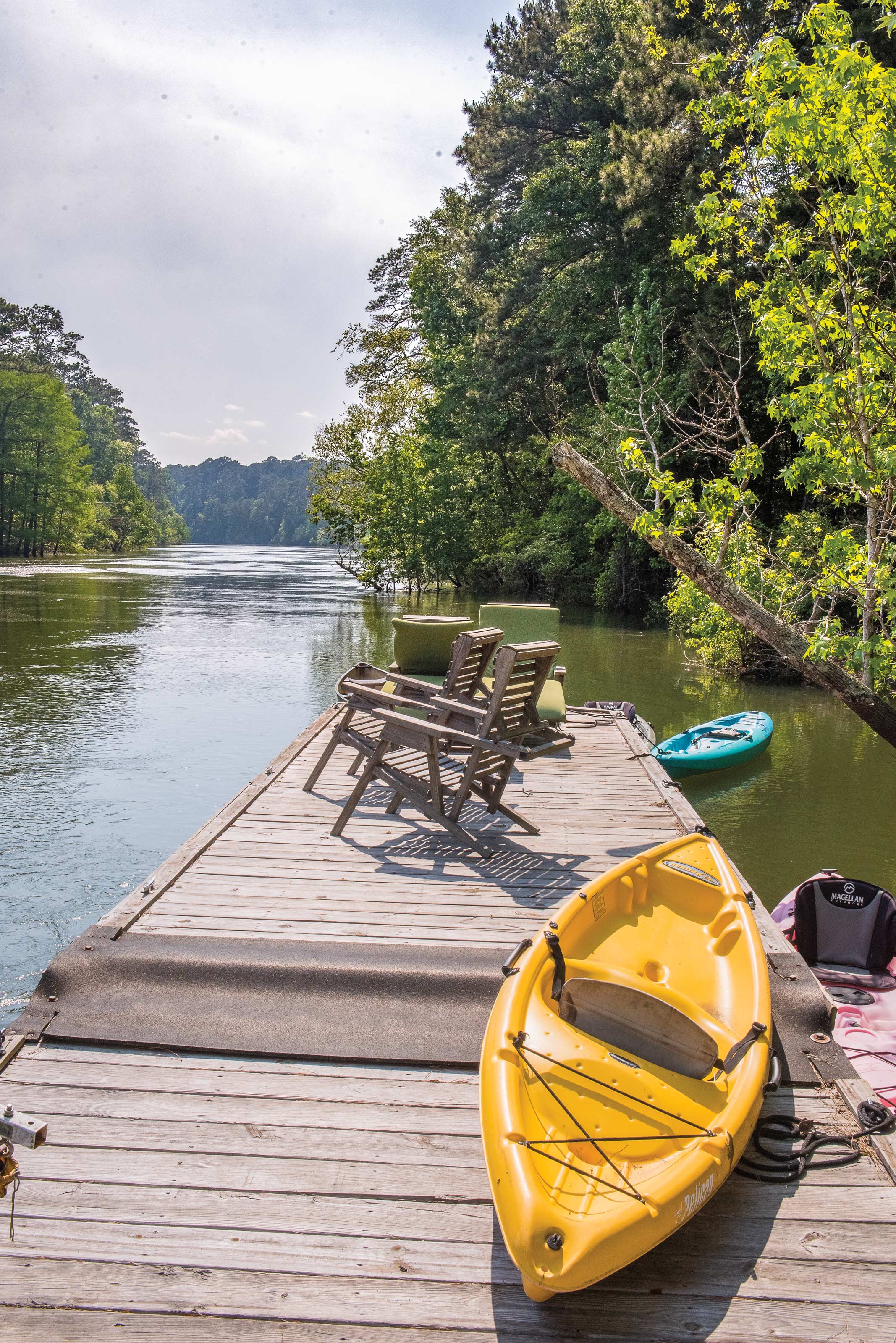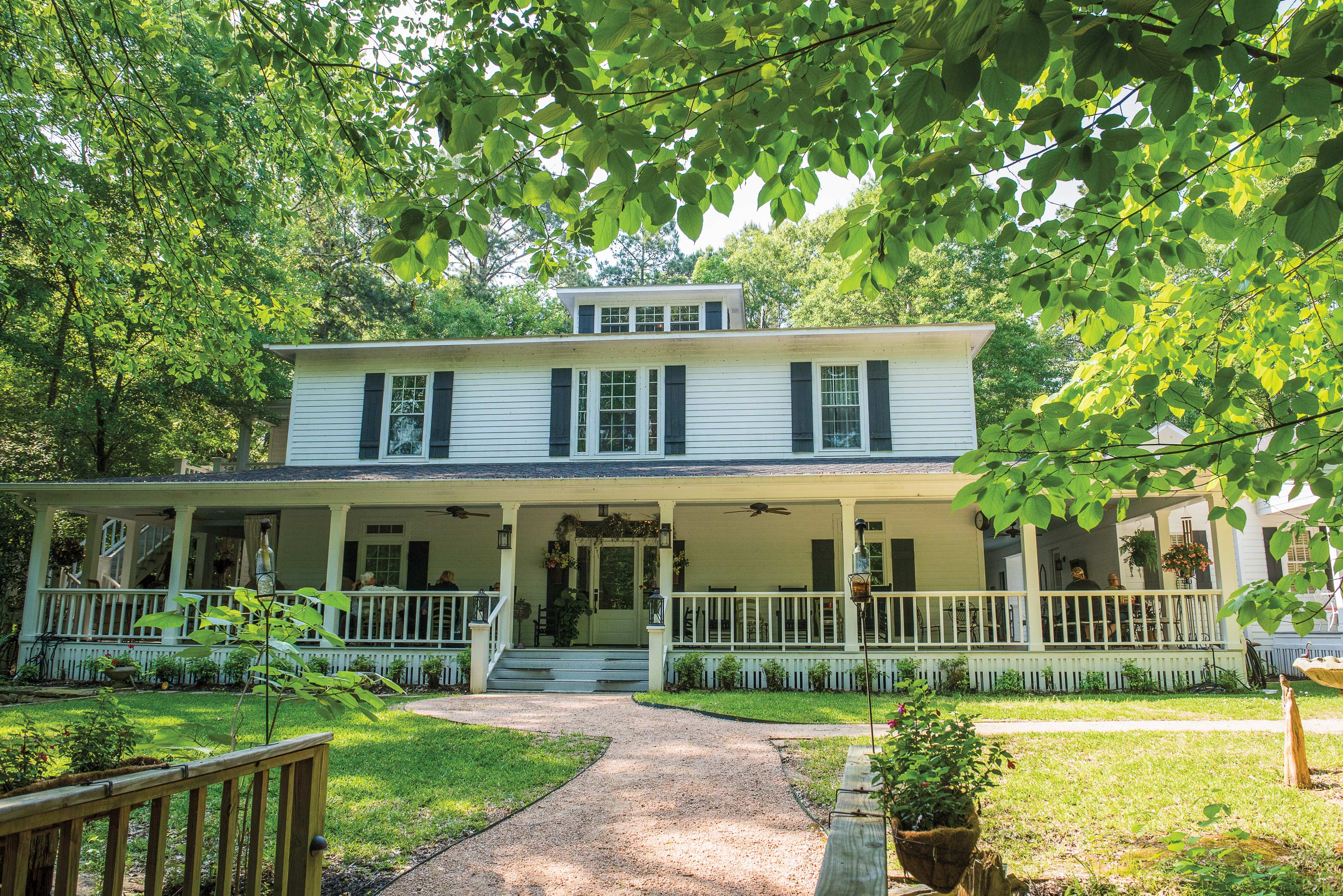
La Paz Bed and Breakfast offers kayaks for making a 4-mile trip down a stretch of the Angelina River.
Paul Smith, co-owner of La Paz Bed and Breakfast in Jasper, turns his pontoon boat off the main stretch of the Angelina River, where his inn is stationed, into an offshoot called Ward’s Branch.
La Paz Bed and Breakfast
850 County Road 051, Jasper.
Rooms range from $149 to $225.
409-383-130
lapazbnb.com
For the past hour and a half, he’s been leading a tour of the Angelina while describing the various wildlife seen here, bald eagles in particular, and how hurricanes Ike and Rita have affected the waterway. But when we reach Ward’s Branch, just a half-mile from La Paz, he cuts off the motor, and we sit in complete stillness for a few minutes.
Aside from a few distant bird calls, there is no noise: no low hum of insects; no footsteps, human or otherwise; no revelers in other boats; barely the sound of our own breathing. It’s both jarring and moving. It’s hard to find such silence in day-to-day life. Perhaps even harder to find is a corner of the world that feels like your own.
That’s why Paul and his wife, Anne Allison-Smith, built La Paz, meaning “peace” in Spanish, after spending nearly 40 years living in Houston. The Jasper natives returned for the river where they played as kids, water skiing and swimming. The couple, who’ve known each other since they were 4-year-olds, bought the 8-acre property in 2001. At the time, it only had a log cabin on it, and the retreat became a personal getaway when city life became too crowded, too overwhelming, or too polluted with noise. “I found myself waiting for it to be Friday so we could come here,” says Paul, formerly a marketing and sales manager for an advertising firm.
Aside from a few distant bird calls, there is no noise: no low hum of insects; no footsteps, human or otherwise; no revelers in other boats; barely the sound of our own breathing. It’s both jarring and moving.
In 2009, they built the house that Anne had been sketching since she was a child: an elegant white, three-story, Victorian-style farmhouse with a wide wrap-around porch inspired by the work of Jasper architect W.P. Cook, who designed many of the upscale homes in town in the early 1900s. To perfect her skills, Anne even went to design school for a couple of years in her 40s. “It is my favorite material possession,” she says. “Except for a four-day trip to New Orleans, I saw every nail and stud put into this place.”
They opened La Paz as a bed and breakfast in 2010. The main house serves as the residence for Anne and Paul but is mostly open to guests, including the high-ceiling living room with a fireplace, dining room decorated with dainty antique cups and saucers, and a third-floor reading observatory that overlooks the river. There are also two guest rooms inside the main house. On the first floor is “Mama’s Room,” inspired by Anne’s mother, who Anne refers to as a “really cool chick.” Decorated with furniture from Anne’s childhood home, the room features a queen-size iron-and-brass bed and en-suite bathroom with a claw-foot tub. But the most impressive amenity sits just outside the room—a hanging bed hovers right above the porch (with a mosquito net around it because it is in East Texas after all) and serves as a lounge space. On the second floor is a room with four Pullman-style beds (perfect for kids), appointed with vintage suitcases and toy train cars to accentuate the railroad theme.

The main house at La Paz was designed by co-owner Anne Allison-Smith and was inspired by turn-of-the-century Jasper architect W.P. Cook.
La Paz’s larger suites include the Little White House—a wood-paneled cottage with a working fireplace and a tub made for bubble baths, making it ideal for a romantic retreat—and The Log Cabin, which sleeps six and has a full kitchen and smoker, a private dock, and plenty of rocking chairs and swings outback for catching up with friends and family.
Outside of the main house is a path that leads to the floating dock where visitors can read, fish, or just gaze out onto the tranquil, secluded river. For the more adventurous type, La Paz has one canoe and seven kayaks, which you can take on a 4-mile trip downriver, where Paul and Anne will pick you up with their truck at a boat dock and shuttle you back to home base. Paul offers rides on the pontoon boat for $50 a room—on a steamy East Texas summer day, the wind created by cruising feels mighty good. While on the river, keep an eye out for alligators, great blue herons, river otters, and the bald eagles that sit imposingly atop the bald cypress trees.
La Paz is a destination within itself—it almost isn’t necessary to leave the grounds at all.
Most people visit Jasper to fish. Next door to La Paz is Sam Rayburn Reservoir, the largest lake wholly within Texas and a huge attraction for people hoping to catch largemouth bass and crappie for sport and for recreation. If you want a more in-depth look at how the state stocks its lakes with fish, the John D. Parker East Texas State Fish Hatchery, a 20-minute drive from La Paz, offers tours Tuesdays and Fridays led by knowledgeable manager Reese Sparrow.
With the slow pace of Jasper, it can be hard to find lots to do, but Paul and Anne are full of suggestions and happy to arrange a guided fishing trip or museum tour, point you to the nearest hiking trail—like the fascinating 3-mile Sawmill Trail in the Angelina National Forest—or suggest a place in town to grab a bite (the duo raves about Tia Juanita’s Fish Camp, a new-ish Cajun/Tex-Mex joint).
But La Paz is a destination within itself—it almost isn’t necessary to leave the grounds at all. After enjoying a home-cooked breakfast like granola with vanilla yogurt and an egg boat with ham, cheese, and green onions, or creme-brulee French toast, wander around the yards—create a scavenger hunt by finding all the interesting, whimsical art pieces placed around the grounds, from rusted piano keys to a statue of a roadrunner, or gather up a group to play a game of croquet or backgammon on the 2,200-square-foot porch. A few hundred yards to the right of the main house is “The Perch,” an enclosed, raised wooden structure in the middle of the forest. “I love being in the trees, so Paul built this for me,” Anne says. “It’s my zen spot where I go to get away from everything. My phone doesn’t even work down there.” It’s a prime location to achieve inner peace through outer peace.








